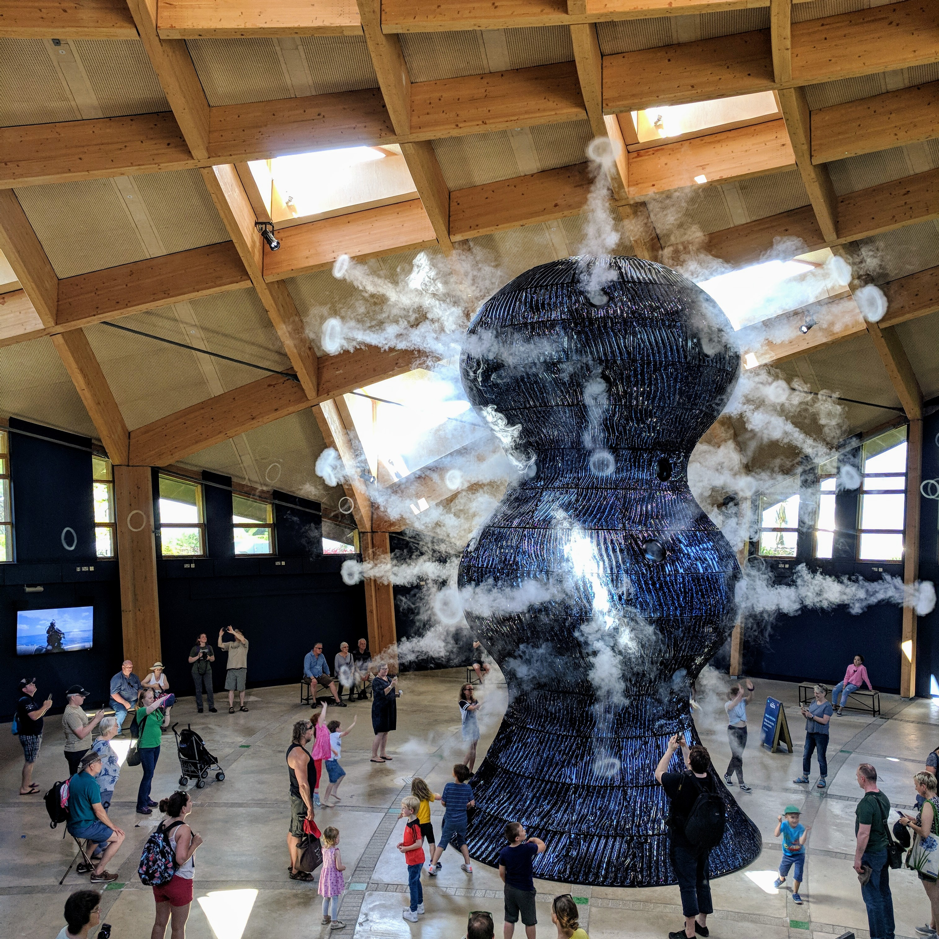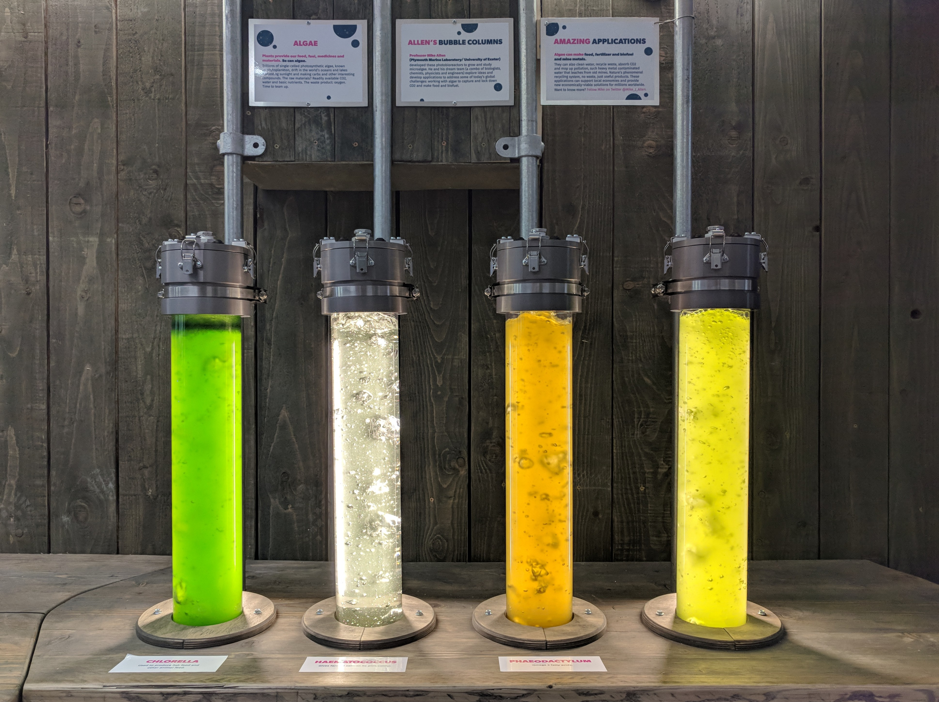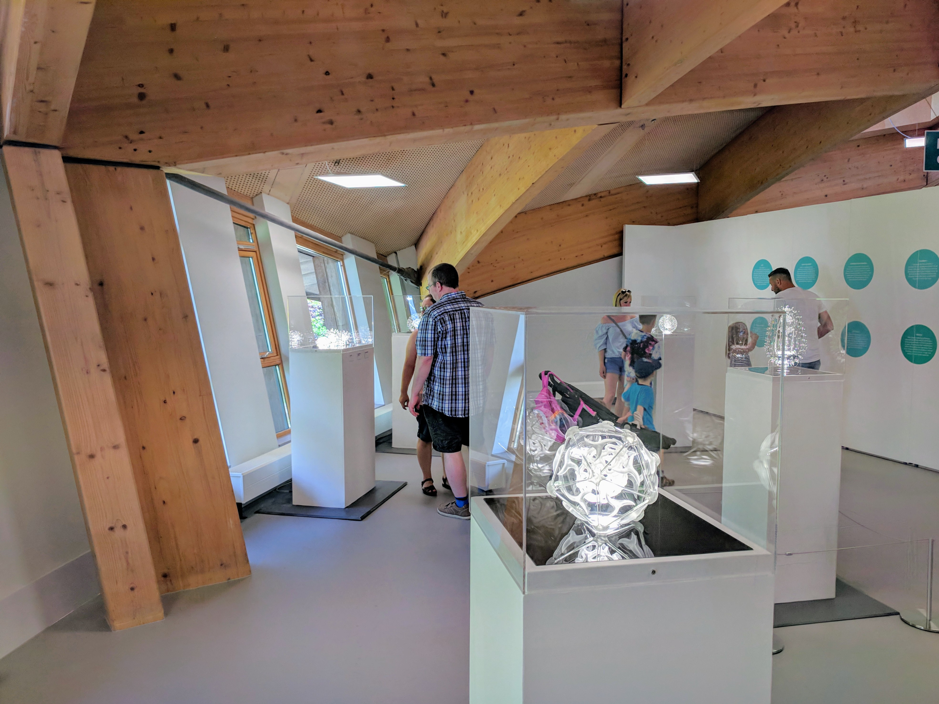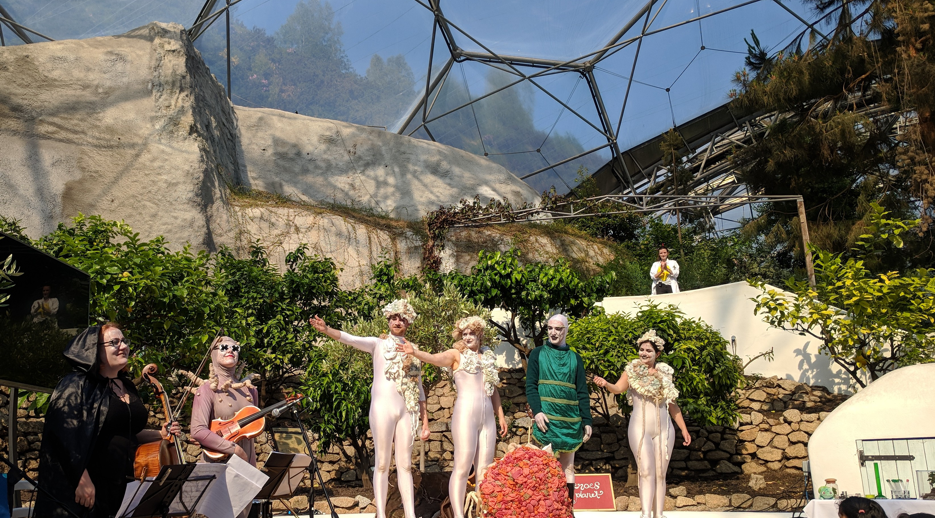Invisible Worlds at the Eden Project
Posted on June 20, 2018 by Michael J. Pascoe
In a transformed quarry in the depths of Cornwall, the Eden Project celebrated the launch of its latest exhibition during the May half-term break. Invisible Worlds aims to educate the public about the many roles played by microbes in shaping our lives. Across the site, science and art are fused into an interactive experience that engages the senses and broadens the mind. We sent Microbiology Society Champion Michael Pascoe to the Eden Project to see Invisible Worlds during its launch week. Here, he writes about his experience.
As I coasted down the A30 into the Cornish heartlands I found myself wondering what surprises awaited me at the Eden Project’s Invisible Worlds exhibition. The Eden Project was built in the early 2000s to demonstrate the ways science can be used to reclaim land scarred by human activity. As they explore the former mining site, visitors are also able to investigate the complex relationship between humans and nature. As we increasingly discover more about the importance of microbes in maintaining a healthy body and environment, their latest exhibition aims to bring the microscopic world sharply into focus.
As I arrived on site, I headed straight to the Core building where the main elements of the exhibition are housed. As I entered the atrium I was immediately greeted by a cloud of smoke emanating from the peculiar ∞ Blue, an imposing ceramic sculpture built to commemorate the role played by cyanobacteria in directing the evolution of life on Earth. Cyanobacteria were the earliest organisms to produce oxygen from water by photosynthesis and were responsible for transforming the planet’s atmosphere into the air we breathe today. In a fitting homage, rings of smoke billowed from the sculpture's pores. Each puff was laced with herbaceous scents, reminiscent of the primordial world in which cyanobacteria reigned supreme.

Visitors of all ages enjoyed interacting with the impressive ∞ Blue sculpture whilst discovering the role played by cyanobacteria in transforming the Earth into an oxygen-rich planet.
Continuing into the rest of the building, numerous zones offered the chance to learn new facts about the microscopic world around us. In the Lab, bioreactors bubbled away in the background whilst visitors participated in a series of hands-on workshops tackling subjects including novel uses for algae and diatoms and molecular interactions in proteins.
In the Rock Garden, I learned about the biology of geology and how soil microbes can be used to tackle global environmental problems including heavy metal contamination and climate change.

In the Lab, Professor Mike Allen’s colourful photobioreactors were used to explain the novel applications of algae in producing fuel, pharmaceuticals and food.
The human microbiome formed the focal point of Invisible You; textiles, ceramics and mechanical marvels took visitors on a voyage through the human body whilst explaining the ways our microflora contributes to health and disease. Continuing on, I stumbled upon the Exhibition Gallery which showcased a multitude of microbial marvels by Luke Jerram. Viruses were brought to life by his collection of glass sculptures. In reference to their nanoscale geometry (which is smaller than the wavelength of light), these sculptures were colourless and contrasted elegantly with the more familiar false-colour images of viruses found in virology textbooks.

HIV, smallpox and avian flu viruses all featured in Luke Jerram’s exquisite collection of glass sculptures.
Before leaving the Core, I touched base with fellow Society member and exhibitor Ruth McLaren. Ruth was offering a taste of some microbiology-related activities through her Devon-based community interest company, Sciencedipity. At one station I grappled with identifying daphnia and other creepy crawlies in pond water wet-mounts whilst at another Ruth demonstrated the effects of antibiotics, metal coins and disinfectants on bacterial growth. Finally, we used UV torches to shine a light on the domestic surfaces most commonly contaminated with pathogenic microbes in the Grime Scene. Ruth explained to me how the Microbiology Society helped support Sciencedipity during its early stages with grants to purchase key equipment. As an early career microbiologist, this reminded me of the benefits of continuing being a member of the Society.
Journeying on, I left the Core to explore the offerings of the Mediterranean Biome which maintains a climate suitable for cultivating grapevines, olive trees and all manner of cacti. The mycologists of the Society will be pleased to know that fungi were not forgotten by the exhibition. Under the warmth of the late afternoon sun, I witnessed one of the exhibitions most otherworldly displays. The Unsung Heroes of The Planet was an opera performed by the Gestalt Arts theatre company and explored the vital role played by fungi in maintaining life on Earth. Through the medium of music and dance, onlookers also learned of the ways which trees can communicate with one another via underground mycelial networks and how fungal spores soar with the wind.

Performers of the Gestalt Arts company take a well-deserved bow after performing their fantastic Fungal Opera.
As the sun waned over the quarry’s edge and my visit came to an end, I found myself reflecting on a day well-spent. Invisible Worlds has succeeded in launching a highly engaging and educational experience for visitors of all ages to enjoy. For any of you considering a trip to the Cornwall this summer, I’d recommend taking the opportunity to visit the Eden Project and experience the exhibition for yourselves - You won’t regret it!

